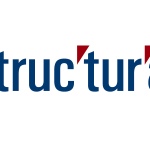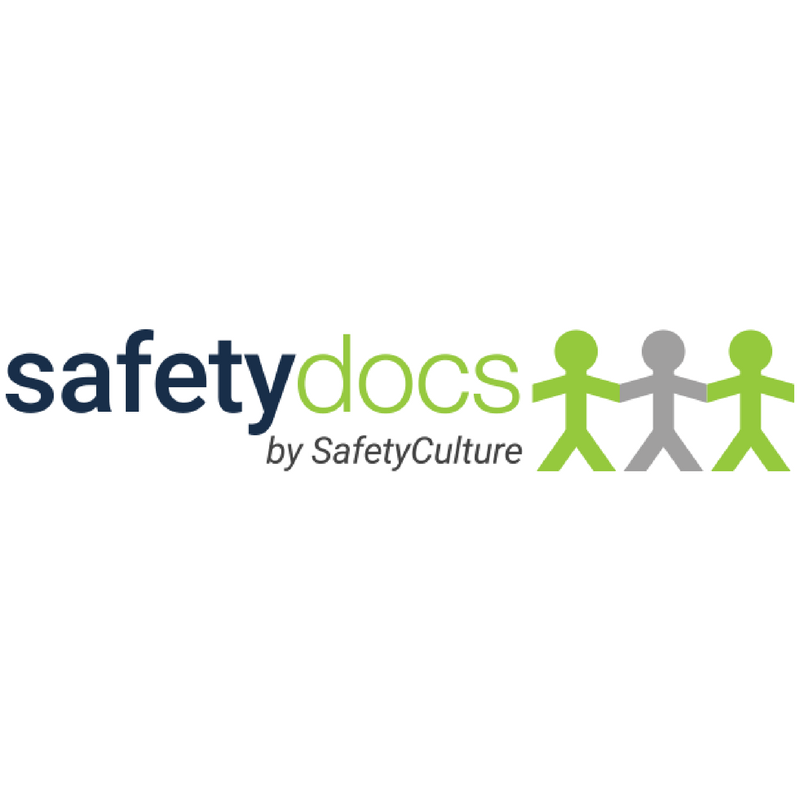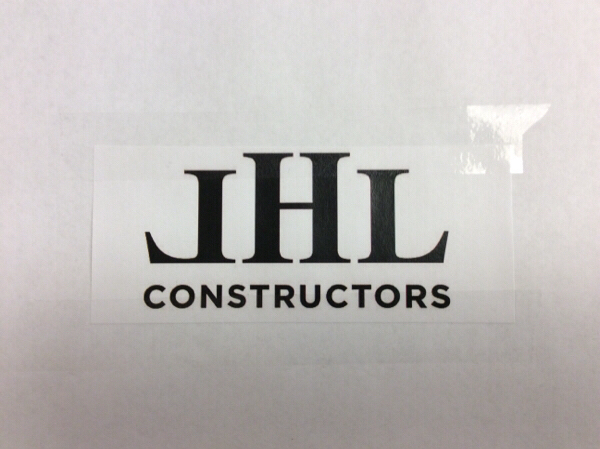Information
-
Audit Title
-
Document No.
-
Client / Site
-
Conducted on
-
Prepared by
-
Location
-
Personnel
1) PERSONAL PROTECTIVE EQUIPMENT
-
a) Hard hats worn?
-
b) Eye and face protection is adequate?
-
c) Hearing protection worn in high noise areas?
-
d) Proper gloves being worn?
-
e) Employees have leather safety toe workboots?
-
f) Proper work clothing (long pants, sleeved shirts)?
-
g) FRC Clothing (proper fit, zipped, buttoned, good condition)?
-
h) Chemical protection (Tyvek/Rain Suit)?
-
i) Are reflective vests available where needed?
2) HOUSEKEEPING
-
a) Are rebar caps used to eliminate impalement potential?
-
b) Debris kept clear of work areas, passageways and stairs?
-
c) Combustible debris regularly removed to control fire hazards?
-
d) Formwork and other scrap lumber free from protruding nails?
-
e) Containers available for disposal of waste materials (dumpster, trash container)?
-
f) Are waste containers regularly emptied to avoid overfilling?
-
g) Are hoses and cords managed to prevent trip hazards?
-
h) Is work are free from ice, oil and other slip hazards?
-
i) Bagged concrete materials stacked/stored to prevent falling, collapse, sliding?
-
j) Aisles and passageways clear and adequate for safe material handling?
-
k) Pedestrian walkways free of trip and slip hazards?
3) STRUCTURE SAFETY AND PROTECTION
-
a) Loose and delaminated concrete removed prior to working?
-
b) Is shoring installed according to the shoring plan?
-
c) Is shoring system maintained?
-
d) Is structure capable of supporting construction equipment/debris?
-
e) Point loading of debris on elevated decks is managed to prevent collapse?
-
f) Material stored at least 10 feet away from edges/handrails or other wise prevented from falling?
4) RESPIRATORY PROTECTION/HAZARD COMMUNICATION
a) Respiratory Protection
-
i) Have employees received respiratory protection training?
-
ii) Have respirator users been medically qualified for respirator use?
-
iii) Respirator users have a fit test card indicating a fit test performed within the last 12 months?
-
iv) Do the make, model and size of the respirator being worn correspond with the fit test card?
-
v) Is Respirator adequate for the specific respiratory hazard?
-
vi) Are respirators properly stored, cleaned and disinfected?
-
vii) Respirators properly used (user seal check, worn correctly, clean shaven, etc)?
viii)Breather Box
-
(1) Calibrated within the last month?
-
(2) Installed and used according to STRUCTURAL West Breathing Air Guidelines?
b) Hazard Communication
-
i) Have employees received Hazard Communication training?
-
ii) Have employee reviewed the MSDS for specific materials in use?
-
iii) Are MSDS on site and available to employees?
-
iv) Are containers labeled with contents?
5) FALL PROTECTION
-
a) Have employees received Fall Protection Training?
-
b) Is fall protection equipment inspected prior to each use?
-
c) Changes in elevation greater than 6ft are protected with guardrails or equivalent?
-
d) Floor openings are covered/clearly marked or guarded?
-
e) Handrails are properly constructed with top-rail, mid-rail and toe board?
-
f) Employees using personal fall arrest systems when exposed to falls?
-
g) Employees practicing 100% tie off?
-
h) Anchorage points rated for 5000 lbs/employee connected?
6) EQUIPMENT USE, INSPECTION & MAINTENANCE
a) Compressed Air Equipment/Manifold System
i) Mobile Air Compressor
-
(1) Inspected before use?
-
(2) Maintenance performed according to schedule?
ii) Receiver Manifold (Pig)
-
(1) Equipped with a safety relief valve, pressure gauge, and operable drain (petcock) valve?
-
(2) Receiver Pressure is not more than 120 psi?
-
(3) Legible ASME B&PV Code, Section VIII data plate on manifold?
iii) Hoses
-
(1) Inspected before use?
-
(2) Whip checks installed at each connection?
-
(3) Chicago couplings secured with pins (no tie wire)?
-
(4) Hoses placed to minimize tripping hazards?
iv) Chipping guns
-
(1) Inspected before use?
-
(2) Retainer ring in good shape?
-
(3) In line oiler installed, has oil in it and is set between 15 and 30?
b) Access Equipment
i) Suspension Scaffolds
-
(1) Have employees received swing stage scaffold user training?
-
(2) Suspension scaffold properly constructed & inspected competent person before each shift
-
(3) Roof setup for suspension scaffold properly constructed & inspected competent person before each shift?
-
(4) Weight of employees, tools & equipment within scaffold rating?
-
(5) Employees not over reaching limits of scaffolds?
-
(6) Hand rails complete?
ii) Supported Scaffolds
-
(1) Scaffold properly constructed & inspected competent person before each shift?
-
(2) Weight of employees, tools & equipment within scaffold rating?
-
(3) Landing areas and platforms free of debris and trip hazards?
-
(4) Employees not over reaching limits of scaffold?
-
(5) Hand rails complete
iii) Ladders and Stairways
-
(1) Have employees received Ladder/Stairway training?
-
(2) Ladder at proper angle, tied off @ top and extends 3 ft. above landing?
-
(3) Ladders constructed of non-conductive material?
-
(4) Ladders inspected before each use and not damaged?
-
(5) Stair rails provided for stairs with 4 or more risers?
-
(6) Stairways free of debris, sand, oil, ice, elect. cords, airlines?
-
(7) Stairways not used for storage of materials?
-
(8) Stairway or ladder provided when break in elevation is > 19"?
iv) Aerial Lifts
-
(1) Have employees received Aerial Lift training?
-
(2) Has the aerial lift been inspected daily before use?
-
(3) Is the operating area stable and reasonably level?
-
(4) Are employees tied off at all times to basket?
-
(5) Aerial lift not used to lift materials?
-
(6) Weight of employees, tools and equipment within manufacturer's specification?
-
(7) Fire extinguisher mounted and inspected?
-
(8) Operated safely?
-
(9) Running equipment not left unattended?
v) Scissor Lifts
-
(1) Have employees received scissor lift training?
-
(2) Has the scissor lift been inspected daily before use?
-
(3) Is the operating area stable and reasonably level?
-
(4) Are employees tied off at all times to platform?
-
(5) Scissor lift not used to lift materials?
-
(6) Weight of employees, tools and equipment within manufacturer's specification?
-
(7) Fire extinguisher mounted and inspected?
-
(8) Operated safely?
c) Construction Equipment
i) Skid Steers
-
(1) Have operators received skid steer operator training?
-
(2) Has the skid steer been inspected daily before use?
-
(3) Is the operating area stable and reasonably level?
-
(4) Skid steer used properly?
-
(5) Fire extinguisher mounted and inspected?
-
(6) Operated safely, seat belt worn?
-
(7) Running equipment not left unattended?
-
(8) Equipment cleaned & free of debris?
ii) Concrete Buggies
-
(1) Have operators received operator training?
-
(2) Has the concrete buggy been inspected daily before use?
-
(3) Is the operating area stable and reasonably level?
-
(4) Concrete buggy used properly?
-
(5) Fire extinguisher mounted and inspected?
-
(6) Operated safely?
-
(7) Running equipment not left unattended?
-
(8) Equipment cleaned & free of debris?
iii) Forklifts
-
(1) Have operators received forklift operator training?
-
(2) Has the forklift been inspected daily before use?
-
(3) Is the operating area stable and reasonably level?
-
(4) Forklift used properly?
-
(5) Operated safely, seat belt worn?
-
(6) Forks lowered to ground when not in use?
-
(7) Running equipment not left unattended?
-
(8) Equipment cleaned & free of debris?
d) Other Equipment and Tools
-
i) Equipment/Tools disconnected from power source before changing bits/blades?
ii) Hammer Drills
-
(1) Only Hilti Brand with ATC feature available for use?
-
(2) Employee keeping body parts out of the line of fire
iii) Grinders
-
(1) Are guards and handles in place?
-
(2) Grinding discs/blades have rpm rating greater than grinder spindle speed?
iv) Circular Saws
-
(1) Guards operate properly?
-
(2) Employees operating with two hands?
-
(3) Equipped with electric brake or worm drive?
v) Sand Pot
-
(1) Have employees received training?
-
(2) Has the sand pot been inspected daily before use?
vi) Pressure Washer/Water Blaster
-
(1) Have operators received training?
-
(2) Has the equipment been inspected daily before use?
-
(3) Equipment being used properly?
vii) Grout Pump (Epoxy, Chemical, Concrete)
-
(1) Have employees received training?
-
(2) Has the equipment been inspected daily before use?
e) Motor Vehicles
-
i) In safe operating condition (lights, windshield, horn, tires, brakes, gauges operable)?
-
ii) State inspection current?
-
iii) License/Registration current?
-
iv) Driver has valid state issued drivers license and designated as an approved driver?
-
v) Trailer/equipment connected properly (safety chains, lights, hitch, and brakes)?
-
vi) Load is stable, secured properly, does not overload vehicle?
-
vii) Fire extinguisher mounted in bed of pickup?
-
viii)Operat0065d safely, seat belt worn?
-
ix) Running equipment not left unattended?
-
x) Cab and truck bed cleaned & free of debris?
7) JOBSITE SAFETY REQUIREMENTS
a) Postings
-
i) 6 IN 1 Poster (0SHA, Minimum Wage, Discrimination, etc.)
-
ii) Emergency Action Plan poster is completely filled out and posted?
b) Medical/First Aid
-
i) Local clinic for injury treatment identified in the Safety Execution Plan?
-
ii) Local hospital with emergency room facilities identified in the Safety Execution Plan?
-
iii) Trained First Aid/CPR provider been identified by name in the Safety Execution Plan?
-
iv) First Aid/CPR provider has unexpired FA/CPR Training card?
-
v) First aid kit is available on site and inspected regularly?
-
vi) Is emergency eyewash station available when corrosive or other injurious materials are used?
-
vii) Bloodborne pathogens kits available
c) Electrical Safety
-
i) GFCIs in use or assured grounding program implemented?
-
ii) Electric cords inspected before use?
-
iii) Electric panels properly constructed with covers & inspected?
d) Sanitation
-
i) Is an adequate supply of drinking water available?
-
ii) Portable drinking water containers cleaned, sanitized and rinsed daily and properly marked/dated?
-
iii) Disposable cups and trash receptacle available?
-
iv) Adequate number of toilets/wash facilities provided (1 toilet/50 employees or less; 1/each additional 50)?
-
v) Do mobile crews have transportation to toilet/wash facilities nearby?
-
vi) Are eating/drinking areas located to prevent exposure to harmful materials?
-
vii) Trash disposal available at eating/drinking areas?
a) Gas Cylinder Safety
-
i) Compressed cylinders stored and secured vertically?
-
ii) Caps on cylinders when not in use?
-
iii) O 2 and fuel gases stored 20' apart?
-
iv) Flash back arresters on torch handle & at cylinder?
-
v) Compressed gas cylinders handled and moved safely?
f) Fuel Handling and Flammable Liquids
-
i) OSHA fuel cans with flash arrester?
-
ii) Equipment turned off while fueling?
-
iii) Fuel storage area: Signs/Containment/> 20lbs Extinguisher?
-
iv) Proper storage of flammable liquid construction products?
g) Fire Protection
-
i) Adequate fire extinguishers: Inspection/placement/size?
-
ii) Welding, burning, cutting: No combustibles in area?
-
iii) Fire watch provided when necessary?
-
iv) Oily rags stored in proper container?
-
v) Designated smoking area provided/No smoking signs posted?
-
vi) Fire extinguishers being maintained?
-
vii) Employees trained in proper use of fire extinguishers?
h) Ventilation
-
i) 20 air changes per hour in confined space?
-
ii) Provides clean, breathable air (Constant Monitoring)?
-
iii) Air flow sufficient to reduce contaminants to a safe level?
i) Other
i) Confined Space
-
(1) Following Confined Space Entry Permit process?
-
(2) Employees trained in Confined Space Entry?
-
(3) Entry Supervisor Trained?
-
(4) Rescue services available?
ii) Working On, Over or Near Water
-
(1) Life vests available?
-
(2) Life Ring w/ 90 ft. of line present every 200 ft.?
-
(3) Rescue skiff available?
iii) Excavation/Trenching
-
(1) Following trenching procedures
-
(2) Employees competent in trenching procedures
-
(3) Qualified person assessing effective trench Procedures
-
(4) Shoring, Benching, Sloping engineered
-
(5) Proper entry and exits provided
iv) Third Party Safety (other contractors, general public)
-
(1) Public warning/hazard signs, signals or communication?
-
(2) Traffic control: signs, direction, barrels, barricades?
-
(3) Dust/Vapor: Dust curtains, tape doors/windows, ventilated area?
-
(4) Public Protected from flying/spilled construction debris/chemicals?
-
(5) Pedestrian walkways protected from trip & slip hazards?
-
(6) Adequate pedestrian barriers/fences/gates/flagging?
-
(7) Overhead protection from falling/flying debris/tools/equip.?
-
j) Adequate lighting in all areas?
-
k) Embedded utilities located?
8) SAFETY CULTURE
-
a) Safety Execution Plan developed and on site?
-
b) Front Line Safety Initiatives implemented?
-
c) Project Manager dedicates time to ensure safety related obligations are fulfilled?
-
d) JSA's when new tasks start?
-
e) Pre Project Planning (PrePP) done for changed conditions?
-
f) Pre Task Planning (PreTP) done prior to starting new tasks?
-
g) Site specific safety training from PrePP completed?
-
h) Follow-up on action items from JSA's, MSA's, PrePP, PreTP?
-
i) Site Specific Safety Plan from PrePP implemented?
-
j) New emp. given Standard Orientation prior to starting work?
-
k) Danger - Do Not Use tags available and in use where needed?
9) COMPETENT PERSONS
-
a) Personal Protective Equipment:
-
b) Respiratory Protection:
-
c) Fall Protection:
-
d) Scaffolds, Platforms and Ladders:
-
e) Motorized Access Equipment:
-
f) Confined Space:
-
g) Forming:
-
h) Grouting:
-
i) Trenching:
-
j) Cranes/Hoists & Rigging:
-
k) Welding:
Signatures
-
Job Site Supervisor
-
Auditor











